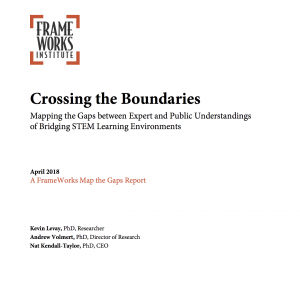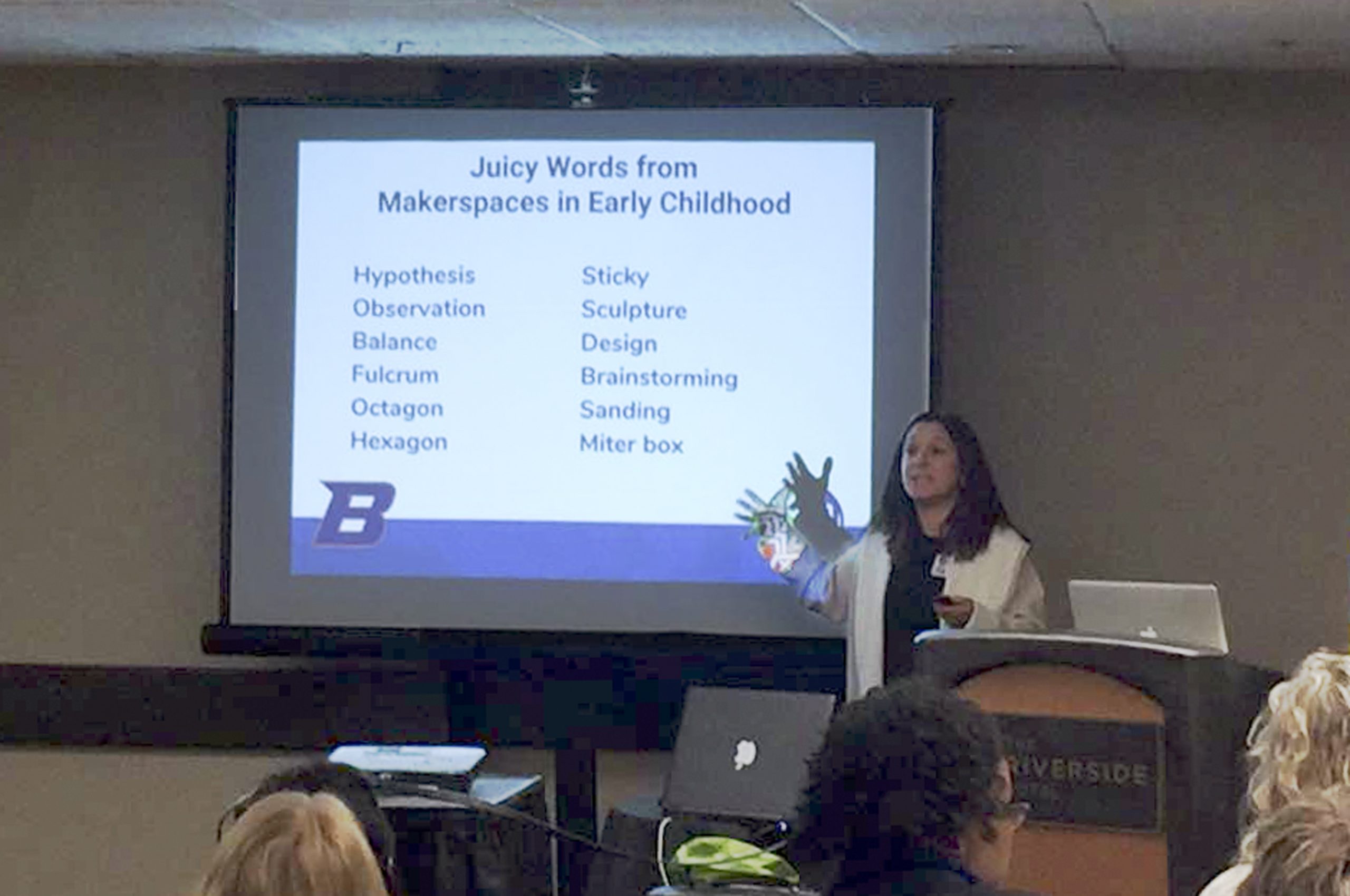
Ask Americans where kids are learning the skills they’ll need to participate in the 21st-century workforce, and you’ll likely hear the same answer over and over again: home or school.
That’s how most members of the U.S. public respond when asked about where learning takes place, according to the work we’ve done at the FrameWorks Institute, a communications think tank in Washington, DC. And that way of thinking applies to science, technology, engineering, and math (STEM) education, our new report on public attitudes about STEM learning finds.
Until you specifically ask about them, you won’t hear much about the many other places where STEM learning takes place, such as libraries, museums, daycare, afterschool programs, and summer camps. And you certainly won’t hear about the need to connect and integrate—or “bridge”—the STEM learning that takes place in these informal learning environments.
School and home are, of course, primary locations for STEM education. When we think about STEM learning, many of us call up images in our heads—or draw on our own personal memories—of learning elementary math while baking cupcakes in the kitchen or the basics of biology while dissecting frogs in the school science lab (think Elliott from E.T.)

But we know that STEM learning takes place in many other locations, too. Immersion in these other settings is equally—if not more—valuable for sparking and building children’s interest and fluency in STEM. The opportunities are endless: Kids explore engineering when they participate in a “mad science” class at summer camp. They learn about biology, the environment, and what to do when things don’t go as planned by growing fruits and vegetables in a community garden. In afterschool programs, they learn about computer programming, and see how they can use math and technology to solve all sorts of real-world problems. And these are just a few of the many places where kids learn STEM.
Ensuring high quality STEM learning in these informal environments is also essential—not least because it’s fun. It enables kids to pursue STEM learning as it relates to their own interests and shows them the broad value and benefit of learning STEM (whether that’s planting a flower garden or forecasting the weather). And it allows for more flexible, hands-on, and no-test-no-stress learning. What’s more, when learning is meaningfully connected across all of these places, this deepens and advances children’s engagement and knowledge of STEM, and narrows disparities in different children’s access and interest in STEM learning opportunities.
Yet few people fully appreciate the need to prioritize STEM learning opportunities in other settings than school, or to connect and integrate, or bridge, these opportunities, FrameWorks found. This makes it difficult for advocates to build support for efforts to bridge STEM learning—wherever it takes place.
To help advocates make a stronger case for bridging STEM learning across environments, FrameWorks researchers interviewed experts and members of the public about education, STEM learning, and bridging STEM learning across various settings, and “mapped the gaps” between their views. Researchers found that Americans tend to:
- Think about people, not places. When the public thinks about STEM education, they think about people, such as teachers, and their characteristics and qualifications, but not about places. They rarely think about how the resources, design, and cultural norms of different places influence learning.
- Focus exclusively on home and school. When thinking about learning environments, people think about home and school, but not other sites, such as libraries, museums, daycare, afterschool programs, or summer camps. People tend to see home and school as locations where kids learn separate and distinct skills (values at home and academics at school) and in a sequential order, with home-based learning serving as a precursor to school-based learning.
- View technology as an unhealthy distraction. Experts see technology as a powerful learning tool, but members of the public see it as a distraction and worry about its effects on kids’ social connections. As a result, the public sees technology as something that must be restricted and curtailed—rather than subsidized and supported.
- See connecting learning across settings as repeating and reviewing school-based content. Experts argue that connecting and integrating STEM learning across environments means advancing and deepening children’s interest and knowledge—learning in different environments is equally important to, and should be both different from and build on the learning that takes in each. The public, however, thinks connecting learning environments means simply repeating and reviewing what children learn at school—learning outside of school is thought to be secondary to learning at school, and does not always or necessarily have to help kids learn other skills or content than what they learn at school. They don’t readily see the unique value of STEM learning in informal settings or how connecting it to school-based content advances or deepens children’s STEM learning beyond what they may learn at school.
These and other findings are summarized in “Crossing the Boundaries: Mapping the Gaps between Expert and Public Understandings of Bridging STEM Learning Environments.”
Supported by the Oath, Heising-Simons, and Bezos Family foundations, the report is part of the Families Learning Across Boundaries (FamLAB) project led by the Joan Ganz Cooney Center and in partnership with FrameWorks, New York University, and Stanford University.
It builds on previous research by FrameWorks into how to frame STEM education and digital media and learning—and shows how advocates can make a stronger case for STEM learning, wherever, and whenever, it happens, and ultimately, how we can build a stronger, more prosperous society.
 Allison Stevens is senior writer and editor at the FrameWorks Institute, a communications think tank in Washington, DC. Kevin Levay is a researcher at FrameWorks.
Allison Stevens is senior writer and editor at the FrameWorks Institute, a communications think tank in Washington, DC. Kevin Levay is a researcher at FrameWorks.



